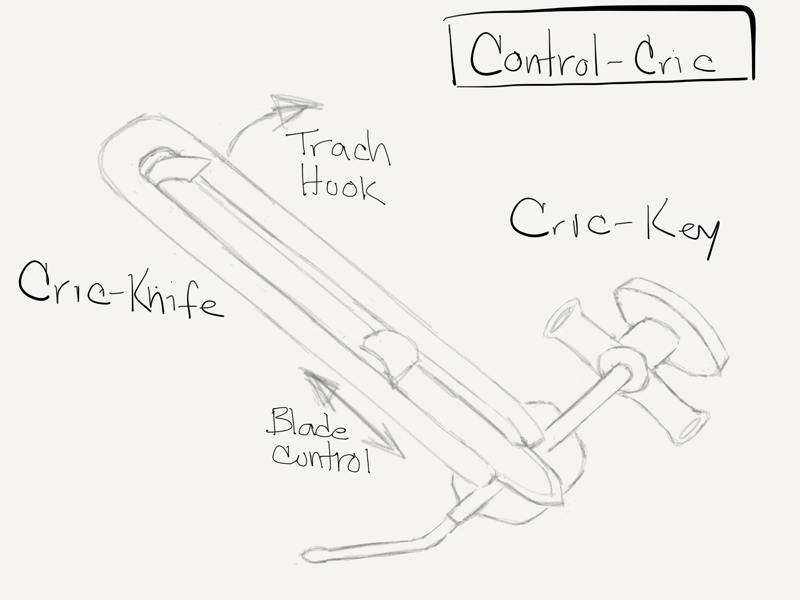Inappropriate delay of establishing a surgical definitive airway with a cricothyrotomy has been documented in field and hospital operations1,2. This can be attributed to many factors including:
- Failure to recognize Can’t Intubate-Can’t Ventilate scenario.
- Not appreciating the seriousness of patient condition after multiple failed endotracheal intubation attempts.
- Overdependence on endotracheal intubation adjuncts including video laryngoscopy, supraglottic airways, intubating endoscopes, gum-elastic bougie.
- Reluctance to proceed to invasive surgical procedure.
- Inexperience with surgical cricothyrotomy.
Cognitive aides such as the Vortex Approach are useful in combating the first three of the items on the list. However, the explosion of intubating adjuncts have decreased the frequency of failed airways and along with it experience with performing a surgical cricothyrotomy.
Cricothyrotomy Kits
This inexperience requires a focus on training with the various open surgical techniques (knife-finger-bougie, three-step, etc.). This includes didactics, simulation, models, and cadavers. However, companies have also developed several kits with specialized equipment to increase the success and speed of this infrequent procedure.
- Rusch QuickTrach Cricothyrotomy Kit
- Nu-Trake Adult Emergency Cricothyrotomy Device
- Melker Cricothyrotomy Set
- Pertrach Emergency Cricothyrotomy System
- Portex Cricothyroidotomy Kit
- Control-Cric System
The Control-Cric System
The Control-Cric System was developed with Dr Levitan and is currently being marketed by Pulmondyne4. It includes a specially designed scalpel (Control-Knife) and custom tracheostomy tube (Control-Key).

Its key features include:
- Dual sided blade with a much greater width:length ratio than a standard No 11 blade to help minimize posterior tracheal wall injuries.
- Integrated tracheal hook that avoids possibility of losing track through cricothyroid membrane.
- Fixed length tracheaostomy tube that prevents main stem intubation. Since the distance between the vocal cords and carina are typically about 11cm, a 30cm endotracheal tube can often be inserted too far.
- Tactile feel of Cric-Key allows blind confirmation of tracheal placement.
The procedure itself is rather straight forward. The blade is used to puncture and open the cricothyroid membrane. The integral trach hook is then advanced into the trachea and detached from the holder. The Cric-Key is the cannulated into the trachea, and inner blunt trocar is removed before attaching the tracheostomy tube to a ventilation device.
There have been randomized-control trials of other cricothyrotomy kits3, but so far none involving the Control-Cric System have been published.
Selected Readings
- Mabry RL, Frankfurt A. An analysis of battlefield cricothyrotomy in Iraq and Afghanistan. J Spec Oper Med. 2012; 12:17.
- Cook T, Woodall N, Frerk C. NAP4: Report and Findings of the 4th National Audit Project of the Royal College of Anaesthetists.
- ■ Murphy C, Rooney SJ, Maharaj CH, et al. Comparison of three cuffed emergency percutaneous cricothyroidotomy devices to conventional surgical cricothyroidotomy in a porcine model. Br J Anaesth. 2011;106:57.
- Levitan, RM. The Cric-Key and Cric-Knife: A Combined Tube-Introducer and Scalpel-Hook Open Cricothyrotomy System. J Spec Op Med 2014;14:45
Contribute your thoughts.